From the Trenches
New Dates for the Oldest Cave Paintings
By ZACH ZORICH
Monday, June 13, 2016
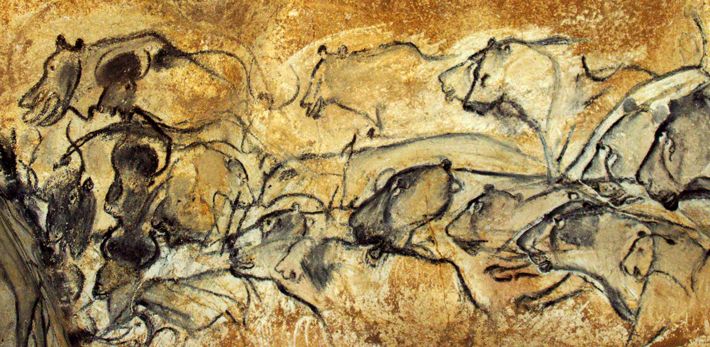
The World Heritage site of Chauvet Cave in southern France is famous—and a source of both wonder and controversy—for having the world’s oldest cave paintings. When the cave was discovered in 1994, many scholars initially assumed that they must have been made around the same time as those at Lascaux, around 21,000 years ago. But the first radiocarbon dates showed that Chauvet Cave had been occupied twice starting about 35,000 years ago. The Aurignacian people, among the first Homo sapiens to live in Europe, brought to the cave a fully formed artistic tradition that used a variety of techniques involving charcoal and a type of red pigment. Now, a new batch of 88 radiocarbon dates has further refined the cave’s chronology. Humans used the cave from 37,000 to 33,500 years ago and again from 31,000 to 28,000 years ago, the research has found. A series of chlorine isotope dates shows that the cave’s entrance was sealed by a rock fall around the time of its last use.
Off the Grid
By MALIN GRUNBERG BANYASZ
Monday, June 13, 2016
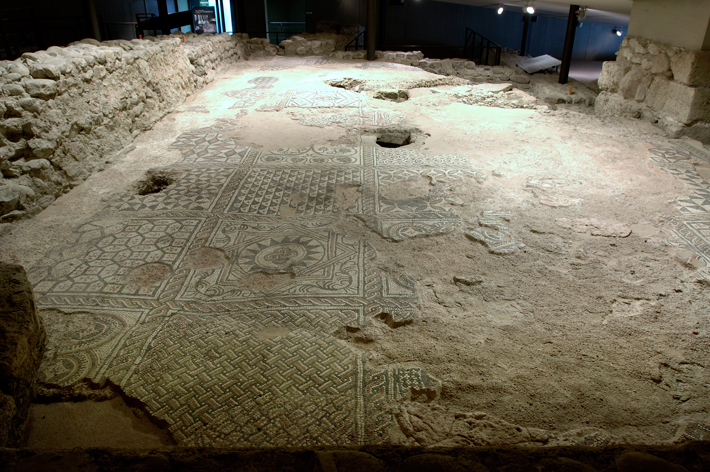
The installation of a new heating system in the 1970s revealed a rich, millennia-old archaeological site under the famous Saint Pierre Cathedral in the Old Town of Geneva, Switzerland. After 30 years of excavation by the Cantonal Department of Archaeology, the site was opened to the public, revealing what Michel Etter, president of Thematis, which created the visitor experience, says is one of the most remarkable places in Europe. It was a place of worship well before the birth of Christianity, and Geneva was so central to the development of the religion—John Calvin preached from Saint Pierre in the sixteenth century—that it is often called the “Protestant Rome.”
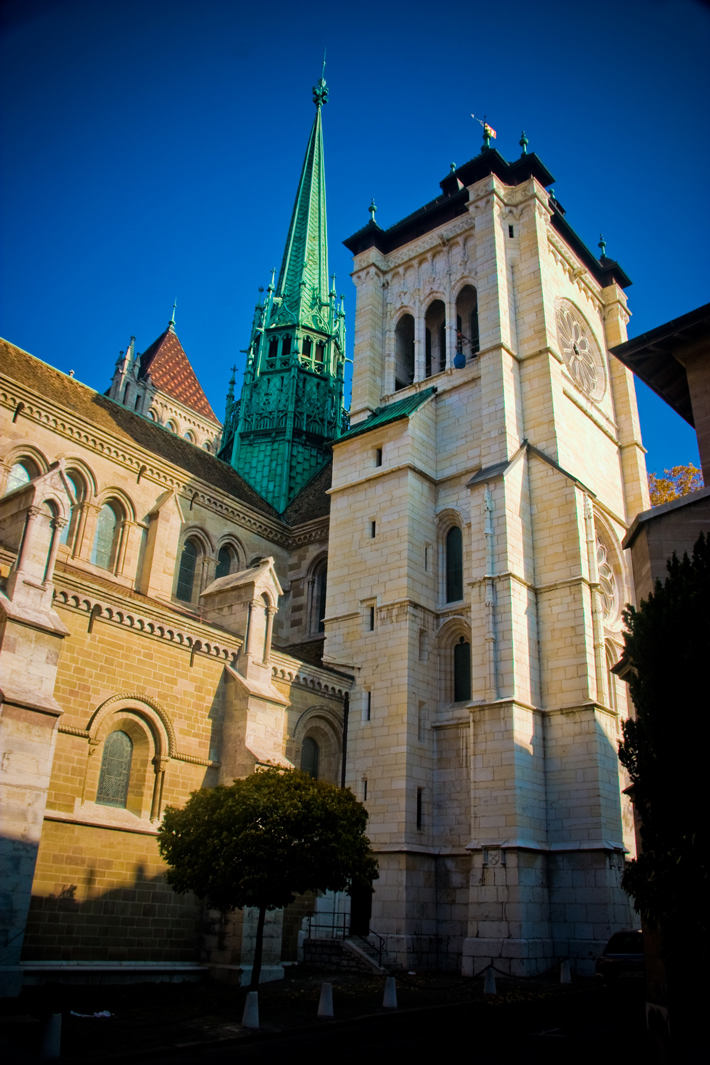 The site
The site
Completely covered and protected by the cathedral, the site encompasses more than 30,000 square feet. Modern tunnels and galleries extend below the building to provide visitors with access to a variety of stratigraphic layers. The earliest artifacts go back to the Neolithic, when people first began to settle on the shores of Lake Geneva, and include an 1150 B.C. burial mound. Geneva later became a fortified settlement of the Gallic Allobrogian tribe, and the well-preserved grave of an Allobrogian chieftain, dating to around 100 B.C., can be found in situ below the cathedral choir. The Romans gradually occupied the town and built a variety of structures on the site, including a large edifice that was probably an official building. By the fourth century A.D., the site’s future was decided as a complex of episcopal buildings—monks’ cells, baptisteries, and cathedrals—took root. Centuries of near-constant development culminated in the construction of a single, large cathedral in A.D. 1000, and then the existing Gothic cathedral in the twelfth century. Remnants of many of these older buildings can be seen in the underground galleries, and illustrate how church architecture adapted to changes in ceremonies and habits. Among the sights are elaborate plumbing, mosaics, and decorative elements depicting birds, angels, and grapes.
While you’re there
History permeates Geneva’s Old Town, which surrounds the cathedral with a warren of cobblestone streets, historic buildings, sidewalk cafes, and views of Lake Geneva that have drawn people for millennia. Nearby are Bourg-de-Four Square, where visitors can shop and admire medieval fountains where there was once a Roman marketplace, and Maison Tavel, the oldest house in Geneva, now home to a museum dedicated to the city’s history.
Is it Esmeralda?
By JASON URBANUS
Monday, June 13, 2016
In 1498, Portuguese explorer Vasco da Gama created shock waves in Europe when he reached and returned from the Indian coast—and its valuable spices—by sailing all the way around Africa, a 24,000-mile journey. Da Gama found both success and hostility in the Indian Ocean, so when Portuguese king Manuel I dispatched him to the Indies again, in 1502, he went equipped with an armada of 20 ships and instructions not only to acquire spices, but also to harass and destroy the Muslim shipping industry that had monopolized the spice trade. One of these ships, Esmeralda, was captained by da Gama’s uncle, Vicente Sodré. Though the infamously brutal Sodré was directed by da Gama to patrol the Indian coast and protect Portuguese interests, he opted to sail toward the Arabian Peninsula in search of conquest and the rich plunder of Muslim ships. In 1503, Esmeralda and its crew, including Sodré, were lost in a storm off the coast of present-day Oman.
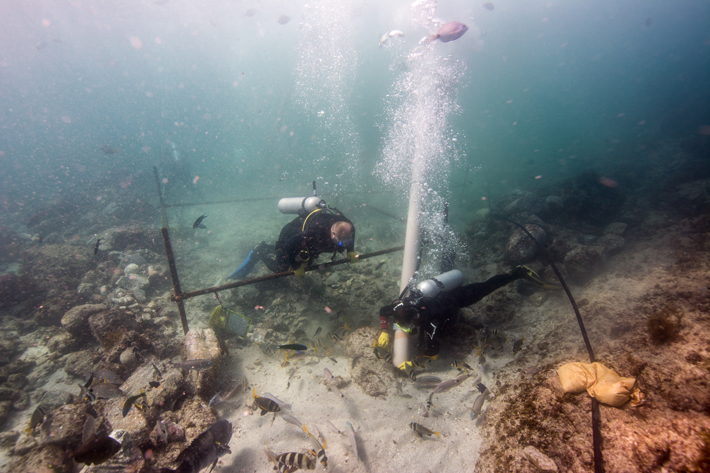
For five hundred years, Esmeralda remained a footnote to the Age of Discovery—until divers discovered its possible wreck site in 1998, on the island of Al Hallaniyah, 25 miles south of the Omani coast. Over the past three years, an archaeological project led by the Oman Ministry of Heritage and Culture and Blue Water Recoveries Ltd. has investigated the early sixteenth-century shipwreck. More than 2,800 artifacts have been recovered by archaeologists, including elements of the ship’s rigging, ceramics, coins, artillery, firearms, munitions, and trade goods. These objects are not only helping to confirm the ship’s identity, but are also providing valuable information about early Portuguese exploration. “As the earliest ‘Ship of Discovery’ ever to be found and excavated by archaeologists,” says project director David Mearns, “we knew that virtually every artifact recovered could provide new insights into how the Portuguese conducted navigation, trade, and naval warfare during this historically important period.”
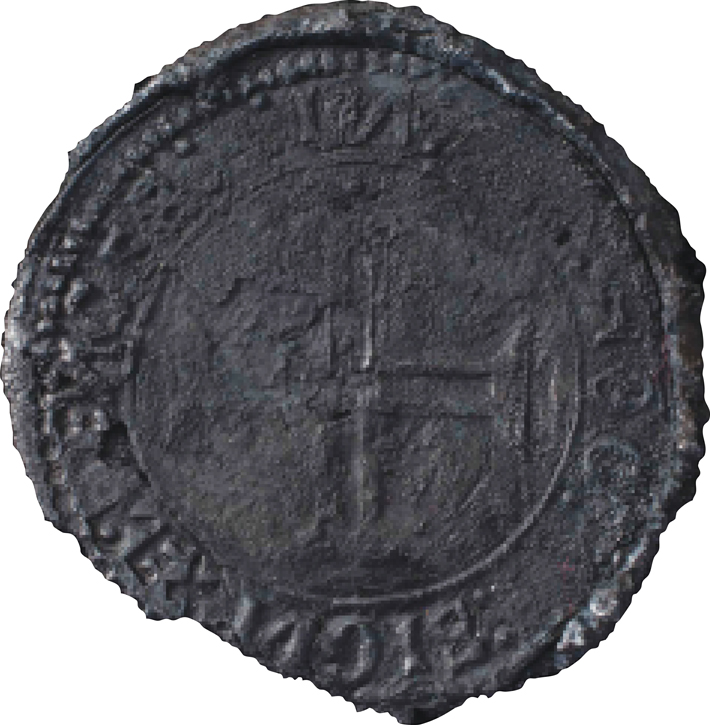 Because the ship’s cargo had remained underwater for more than five centuries, many of the artifacts were badly corroded and difficult to analyze. Researchers relied on imaging technology to gather information invisible to the naked eye or that would require destructive techniques to obtain. A CT scan of the ship’s bell allowed some of its faded lettering to be read. Thus far, the numbers 498 and the letter M have been identified, which experts believe may be part of the inscribed year 1498 and, perhaps, the name Esmeralda.
Because the ship’s cargo had remained underwater for more than five centuries, many of the artifacts were badly corroded and difficult to analyze. Researchers relied on imaging technology to gather information invisible to the naked eye or that would require destructive techniques to obtain. A CT scan of the ship’s bell allowed some of its faded lettering to be read. Thus far, the numbers 498 and the letter M have been identified, which experts believe may be part of the inscribed year 1498 and, perhaps, the name Esmeralda.
Another CT scan was performed on a clump of 24 silver coins, which had corroded into a large mass and were too brittle to be separated. The image revealed the presence of a Portuguese índio coin, one of the rarest coins in existence. The silver índio—of which there is only one other surviving example—was minted by Manuel I in 1499 after da Gama’s first return from the East, and was designed specifically for trade with India. Because it was only minted for a short time (it was replaced in 1504), this discovery has been a useful tool in helping both date and identify the shipwreck. “Even at this relatively early stage in the archaeological assessment of the wreck site,” says Mearns, “the evidence strongly indicates that the wreckage we found is from Sodré’s Esmeralda.”
Advertisement
Advertisement
IN THIS ISSUE
From the Trenches
Is it Esmeralda?
Off the Grid
New Dates for the Oldest Cave Paintings
Fact-Checking Lawrence of Arabia
Etruscan Code Uncracked
Naval Mystery Solved
Off with Their Heads
Cursing the Competition
Proof in the Prints
Fit for a War God
A Life Story
A Villa under the Garden
Iceland’s Young Migrant
Advertisement

Recent Issues
-
 May/June 2024
May/June 2024
-
 March/April 2024
March/April 2024
-
 January/February 2024
January/February 2024
-
 November/December 2023
November/December 2023
-
 September/October 2023
September/October 2023
-
 July/August 2023
July/August 2023
-
 May/June 2023
May/June 2023
-
 March/April 2023
March/April 2023
-
 January/February 2023
January/February 2023
-
 November/December 2022
November/December 2022
-
 September/October 2022
September/October 2022
-
 July/August 2022
July/August 2022
-
 May/June 2022
May/June 2022
-
 March/April 2022
March/April 2022
-
 January/February 2022
January/February 2022
-
 November/December 2021
November/December 2021
-
 September/October 2021
September/October 2021
-
 July/August 2021
July/August 2021
-
 May/June 2021
May/June 2021
-
 March/April 2021
March/April 2021
-
 January/February 2021
January/February 2021
-
 November/December 2020
November/December 2020
-
 September/October 2020
September/October 2020
-
 July/August 2020
July/August 2020
-
 May/June 2020
May/June 2020
-
 March/April 2020
March/April 2020
-
 January/February 2020
January/February 2020
-
 November/December 2019
November/December 2019
-
 September/October 2019
September/October 2019
-
 July/August 2019
July/August 2019
-
 May/June 2019
May/June 2019
-
 March/April 2019
March/April 2019
-
 January/February 2019
January/February 2019
-
 November/December 2018
November/December 2018
-
 September/October 2018
September/October 2018
-
 July/August 2018
July/August 2018
-
 May/June 2018
May/June 2018
-
 March/April 2018
March/April 2018
-
 January/February 2018
January/February 2018
-
 November/December 2017
November/December 2017
-
 September/October 2017
September/October 2017
-
 July/August 2017
July/August 2017
-
 May/June 2017
May/June 2017
-
 March/April 2017
March/April 2017
-
 January/February 2017
January/February 2017
-
 November/December 2016
November/December 2016
-
 September/October 2016
September/October 2016
-
 July/August 2016
July/August 2016
-
 May/June 2016
May/June 2016
-
 March/April 2016
March/April 2016
-
 January/February 2016
January/February 2016
-
 November/December 2015
November/December 2015
-
 September/October 2015
September/October 2015
-
 July/August 2015
July/August 2015
-
 May/June 2015
May/June 2015
-
 March/April 2015
March/April 2015
-
 January/February 2015
January/February 2015
-
 November/December 2014
November/December 2014
-
 September/October 2014
September/October 2014
-
 July/August 2014
July/August 2014
-
 May/June 2014
May/June 2014
-
 March/April 2014
March/April 2014
-
 January/February 2014
January/February 2014
-
 November/December 2013
November/December 2013
-
 September/October 2013
September/October 2013
-
 July/August 2013
July/August 2013
-
 May/June 2013
May/June 2013
-
 March/April 2013
March/April 2013
-
 January/February 2013
January/February 2013
-
 November/December 2012
November/December 2012
-
 September/October 2012
September/October 2012
-
 July/August 2012
July/August 2012
-
 May/June 2012
May/June 2012
-
 March/April 2012
March/April 2012
-
 January/February 2012
January/February 2012
-
 November/December 2011
November/December 2011
-
 September/October 2011
September/October 2011
-
 July/August 2011
July/August 2011
-
 May/June 2011
May/June 2011
-
 March/April 2011
March/April 2011
-
 January/February 2011
January/February 2011
Advertisement






